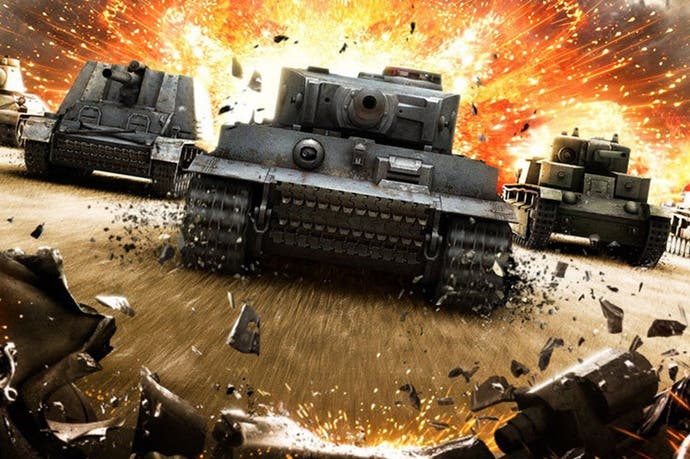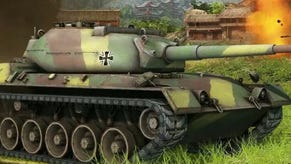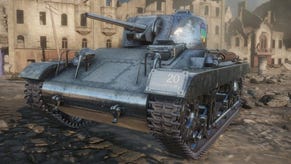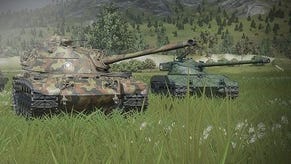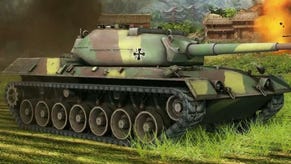Face-Off: World of Tanks
UPDATE: Performance analysis updated with Xbox One stress tests.
UPDATE 4/8/15 11.10am: We've played some more World of Tanks on Xbox One since completing this article, and have found a number of maps and scenarios that stress the engine more intensely than our original performance analysis - so we took the time to compile some of these troublesome areas and put them into a new video embedded below. The article has also been updated.
Original story: Among the most ambitious 'free to play' titles available today, World of Tanks gets a visual overhaul on Xbox One that few expected. It's unique for being the only game on Microsoft's box to have cross-platform play with its older Xbox 360 release - where owners of both consoles can play in the same 15v15 online battles. But Xbox One gets plenty of upgrades over and above this, from remade map assets, a new lighting model with high dynamic range (HDR) and improved physics and effects. It's a makeover that puts PC behind in some regards, but can Xbox One claim to offer the true, definitive version?
First up, the basics: Xbox One keeps several features from the existing, bespoke Xbox 360 release that are not available on PC. Developed on the Bigworld engine by Wargaming's Chicago and Baltimore studios, the two console versions offer weather effects such as rain, plus unique time of day settings for each map - features that are not officially available on the PC release without mods. The game design and mode selection are identical between the two consoles too, right down to the camera's field of view setting, and a new Proving Grounds option where players can practice against AI opponents. Microsoft's two machines essentially have parity in their core gameplay features, while PC takes an independent path.
The similarities on console stop there. Xbox One runs at a full native 1920x1080, storming ahead of the last-gen release's 1280x720 image. That drives image quality up hugely in direct comparisons, especially when picking out details to the far end of giant maps like Abbey. Unfortunately the use of what appears to be FXAA post-processing keeps absolute clarity at bay - though jagged edges are treated well enough. Compared to the PC's superior TSSAA option (as added via recent patch 9.9), Xbox One owners miss out on a super-sampling pass, while a temporal component helps PC to avoid pixel crawl during motion. As it stands, Microsoft's platform turns in only adequate results for image treatment, though running at 1080p is obviously a big plus.
A 15GB patch is needed on Xbox One before we can start, but the wait is worth it: update 2.0's log highlights some pretty hefty changes on current-gen. Chief among these is an overhaul to each map's assets: texture maps and tanks are rebuilt from scratch to suit Xbox One's strengths. Up to 1000 new assets are added, with the game now utilising a physically-based rendering approach that lets light to react naturally with every material - much like the PC version in its latest build. Xbox One's textures are entirely different to any other version, but the upgrade to vehicles is impressive too, rendering in at up to 2.5 times the polygon count of the 360 edition's. The result falls close to the PC's top settings, with Xbox One's tank textures set to eight times the resolution of last-gen.
In play, each map looks vastly different to the PC release at its maximum settings. Certain textures on PC look sharper (helped along by superior anti-aliasing and texture filtering) while others are clearly improved on Xbox One - making an absolute victor here difficult. On the other hand, Microsoft's platform One carries some unique benefits, such as fully redesigned 3D backdrops not included on PC, drawing in whole mountain ranges beyond the field of play. Each map is also strewn with new decorative details, such as dense swathes of grass and rubble that only manifest on Xbox One, filling out areas that otherwise go barren. Added to that, certain buildings sport a less geometric look in this new version, with edges rounded off in a more organic manner.
In terms of draw distances, trees and terrain are rendered at similar range between Xbox One and 360, making online play fair between the two platforms despite a huge advantage in RAM for the former. The main difference is Xbox One owners get a higher density of foliage across the ground - even higher than PC in many cases - though crucially, this doesn't affect visibility during play. Grass and foliage render in at close to the PC's top settings too, though minor objects (such as rocks) show pop-in very similar to its lowest preset.
Effects are also massively improved on Xbox One. We get volumetric smoke and fog effects this time around, eschewing the half-resolution alpha buffers on Xbox 360 for more dynamic plumes of smoke rendered at full detail. Unfortunately, the PC's motion blur setting is switched off entirely on console, while post-process effects are set to the equivalent of PC's medium setting. Essentially, this means Xbox One and 360 qualify for a vignetting filter that appears at the screen's edges, while avoiding the heavy chromatic aberration we see at PC's high setting.
There's been some dabbling in Xbox One's implementation of physics too, though this only has a cosmetic impact. The Havok physics engine is reportedly enhanced here, allowing for more elaborate deterioration of armour as plating falls to a tank's either side. A 'flow map' system is also in place, giving us accurate water movement around streams, while cloud and tree movement is beholden to wind simulation. This logic is also applied on PC, and it means Xbox One owners get a similar rolling shadow effect across terrain as clouds pass by overhead.
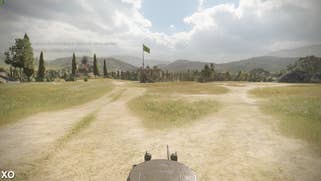
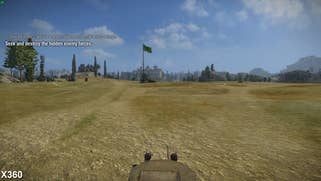
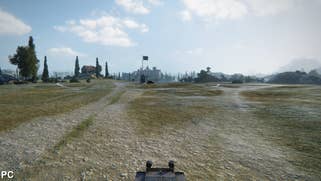
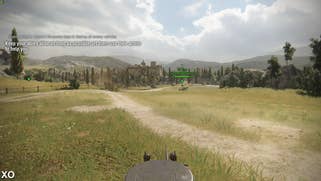
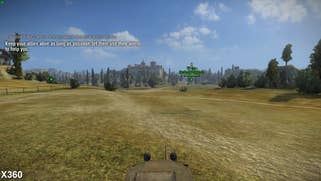
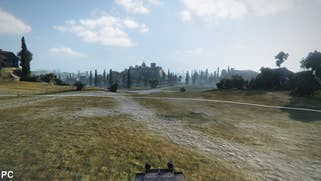
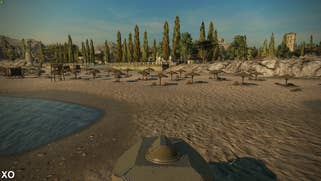
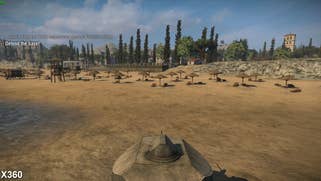
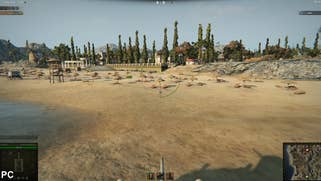
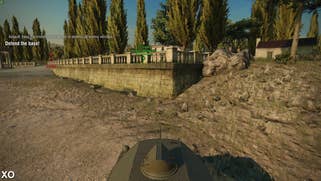

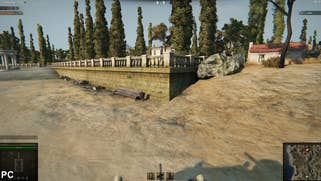
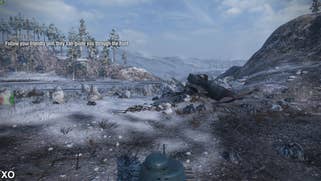
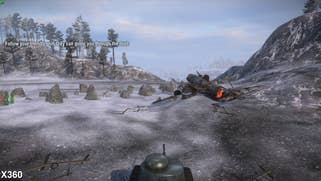
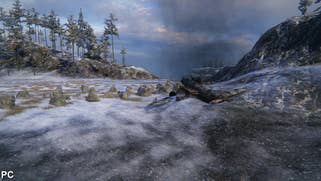
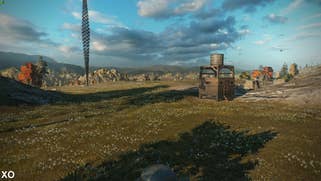
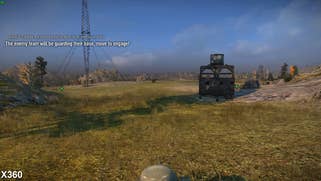
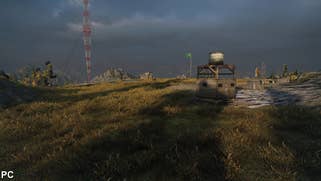
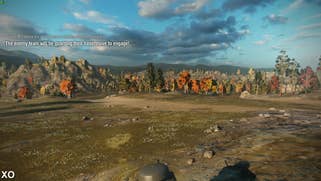
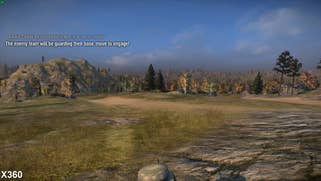
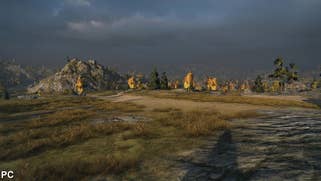
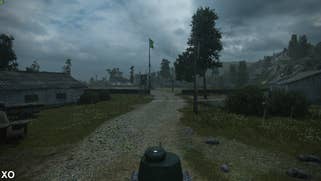

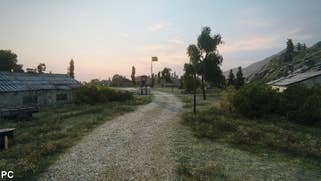
High dynamic range also now features on Xbox One, and in direct comparisons we see 360 left with a much duller, static skyline. Similar to the PC's high setting for lighting, this gives us a natural bloom effect that courses across overcast horizons, adding a sense of depth to big maps like Karelia. It's sorely missed when going back to the Xbox 360 version, and along with optical effects like lens flare, marks a real high point in Xbox One's presentation.
The only area that stands out as a major disappointment on Xbox One is in its treatment of shadows. Inheriting the 360's varying time of day states, including dusk and night, means we get some long, stretching shadows that shows a limited filtering range. In some sequences shadows visibly pop in right in front of the tank, giving the game an even worse return than the PC's lowest shadow preset. Fortunately, World of Tanks makes use of horizon-based ambient occlusion (HBAO) for simpler pockets of shade between objects - a welcome feature, though at a distance from the action this can be hard to notice.
Overall, Xbox One gives us a well-rounded a mixture PC settings, backed by brand new assets that pull it ahead in terms of map detail. It's an experience that strikes us as tailored to the hardware at hand, and this also shows in the game's frame-rate.
A straight 30fps cap with v-sync is enforced on Xbox One, and though it isn't perfectly locked down at this rate it does hold for the majority of the time in many maps. Drops to 27fps flare up in the usual spots; heavy artillery fire with lots of transparency effects is a weak spot, as is bulldozing through a row of destructible structures. One-off stutters are an occasional issue, but overall it's a solid performer in battle - though subsequent to the original publication of this article, we did find a number of stress points that can compromise the experience (see above). Compared to the Xbox 360's performance profile, which drops to bouts of 20fps with tearing at the top of the screen simply by driving through water, this is a big upgrade - and the 30fps target makes sense given the slower pacing to battles than a typical shooter.
World of Tanks on Xbox One - the Digital Foundry verdict
Even with an identical backbone to the Xbox 360 edition - with which it shares its online playpen - the Xbox One release goes to surprising lengths to overhaul every map's look. At its core, this is a continuation of the development started on last-gen, and as a result, terrain draw distances are ultimately a match in the interest of balance. However, Xbox One puts its power to use in other ways; it runs at a full 1080p with a revamped physically-based lighting system, improved LODs on minor objects and grass, new atmospheric effects for passing clouds, and a bump to the polygon count on tanks and buildings.
All of which makes for a pretty satisfying generational leap. The only catch is this: despite the parity in map design, Xbox One owners do still have a slight advantage online as a result of some basic technical differences. A smoother 30fps frame-rate (spared of the 20fps stretches seen on Xbox 360) certainly helps, though the Xbox One version is not completely without its own performance issues. Meanwhile its superior visibility owing to a 1080p resolution makes larger maps like Abbey easier to survey at range compared to the last-gen 720p presentation. Otherwise, the game's core holds up across both generations of hardware, even if the coating over the top massively favours the latest Microsoft console.
Xbox One's advantages are harder to tally against PC, a version that's evolved independently of the console experience to produce its own look. It's fair to say each looks superb in their own way, even if Xbox One falls short with weaker shadows, some minor object pop-in and removed motion blur. On the other hand, the superior terrain and backdrop detail are huge points to Xbox One's credit that can't be ignored. The results are surprising despite it being leashed to its last-gen equivalent - and we hope some of these visual extras work their way into a future PC update for an ultimate all-in-one release.
